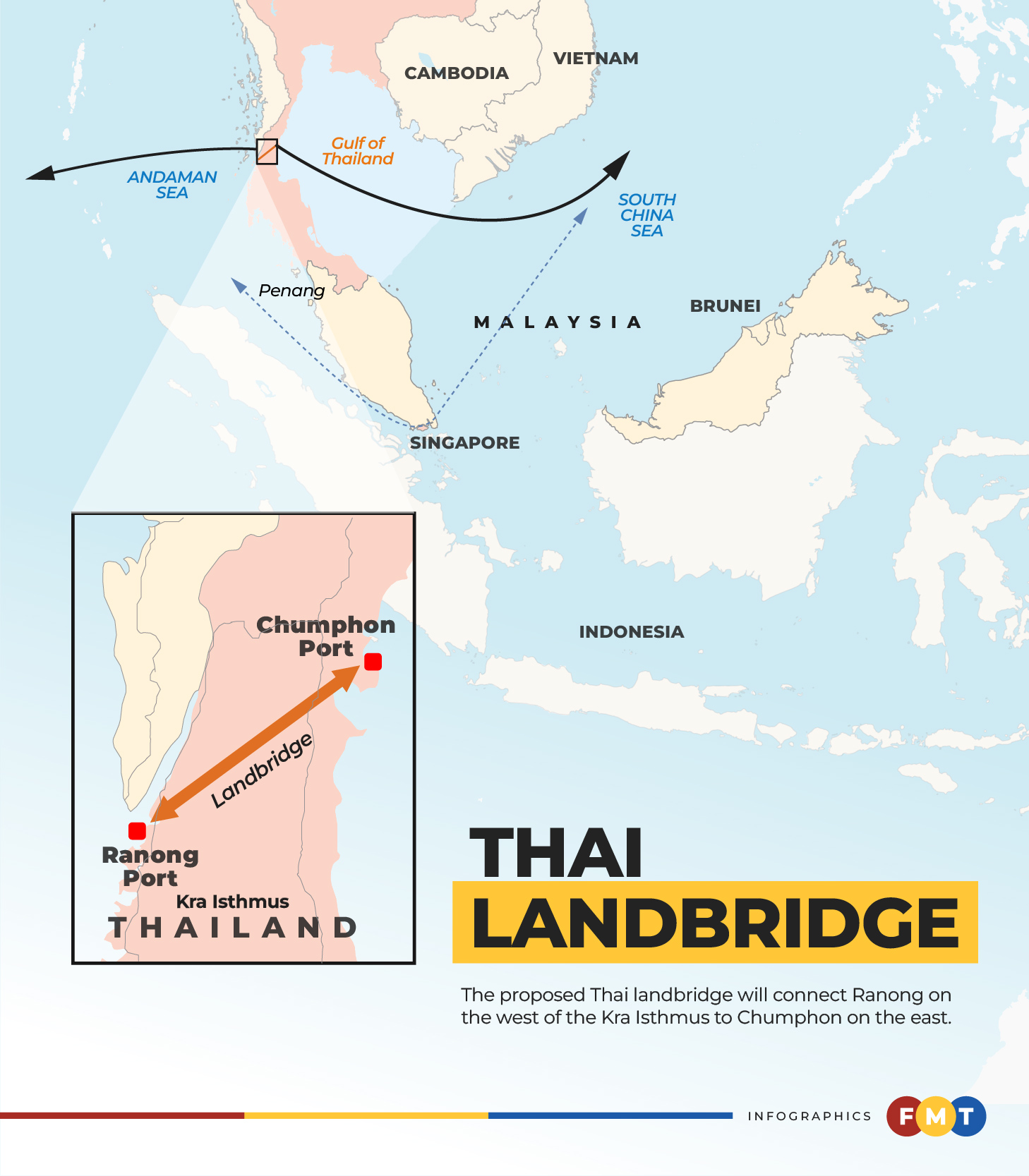
Two new deep-sea ports are to be built in South Thailand – one in Chumphon on the eastern seaboard, and another one in Ranong on the west.
Their location is in the Kra Isthmus, the small land area that separates the Gulf of Thailand on Chumphon’s side from the Andaman Sea near Ranong.
The highway, railway and pipelines that connect the two ports are what is collectively referred to as the Thai landbridge.
This landbridge will handle the transfer by rail or road of containers as well as dry bulk and general cargoes from marine vessels on one side of Kra to the other. These cargoes will then be re-loaded onto waiting vessels and transported to their respective final destinations.

Liquid bulk cargoes such as crude oil and petroleum products will be transferred over land via dedicated pipelines.
Substantial cost and time savings
It is anticipated that the landbridge will generate substantial savings for the international shipping industry in terms of time and cost.
Vessels will not have to ply down the South China Sea, across the Singapore Strait and back up the Malacca Strait, or in the other direction (depending on their sailing direction), shortening their journey by some four to five days.
Similarly, there is bound to be a savings in shipping costs despite the need for double-handling and short transfer by road, rail or pipelines across the isthmus.
Despite the high cost in terms of infrastructure investment, which would involve the building of two large ports, a railway link, highways and pipelines, as well as the installation of cargo handling equipment, the Thais estimate that the project will bring them huge economic benefits and high financial returns.
This is quite likely as Chumphon will handle all export and import trade on the eastern route to places like Vietnam, the Philippines, China, Taiwan and the Far East.
On the Andaman side, Ranong will handle the western trade routes to India, Middle East and European countries.
Any role for Penang?
Presently, a large bulk of Thai cargo is handled by the Penang port, located about 287 nautical miles south of Ranong. Most of these are containerised and originate from South Thailand.
This is due to the absence of suitable ports in the area. Unlike the Penang port, the two Southern ports of Songkhla and Phuket do not have feeder container terminals, and their waters are also quite shallow.
That makes the Penang port the only option available for South Thai cargo presently.
However, this situation may change once the Thai landbridge is completed.
Southern Thai containers may bypass the Penang port and go back up to either Chumphon or Ranong, leaving the northern Malaysian port no longer the preferred option for the import and export of containerised cargo.
After all, Penang is only a small feeder port, meaning it feeds containers on smaller vessels to larger ports such as Westport, Tanjung Pelepas (PTP) and Singapore.
The ability of the Penang port to receive larger vessels in the future is also restricted by its shallow North Channel, which is only about 10 metres deep. This channel is not able to accommodate larger vessels which require a depth of at least 16 meters.
New transshipment hub
So, once the two deep sea Thai ports of Chumphon and Ranong are ready and connected by the landbridge, the Penang port market will likely shrink significantly.
That is the reality as trades for both east- and west-bound shipping traffic would probably choose to use the landbridge between the two new Thai ports.
Apart from providing an alternative trade route for international shipping, the landbridge would also most likely consolidate and channel all South Thai and regional market cargo via these two new ports.
I foresee that Chumphon will eventually be the new container transshipment hub for Malaysia, Cambodia, Vietnam and Thailand, while the corresponding role on the western seaboard side will definitely go to Ranong, not Penang. - FMT
The views expressed are those of the writer and do not necessarily reflect those of MMKtT.



No comments:
Post a Comment
Note: Only a member of this blog may post a comment.